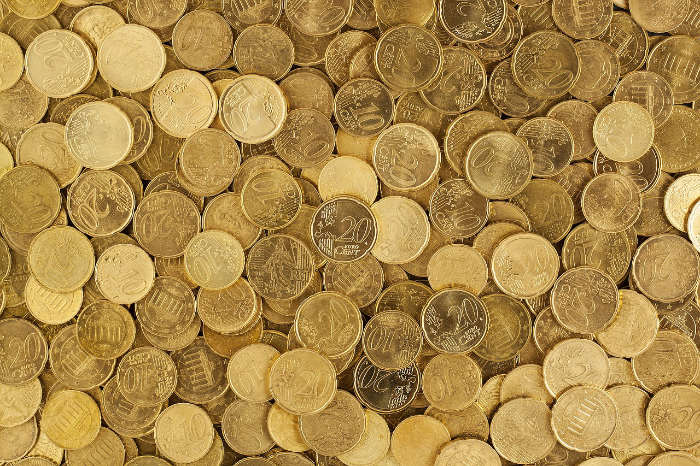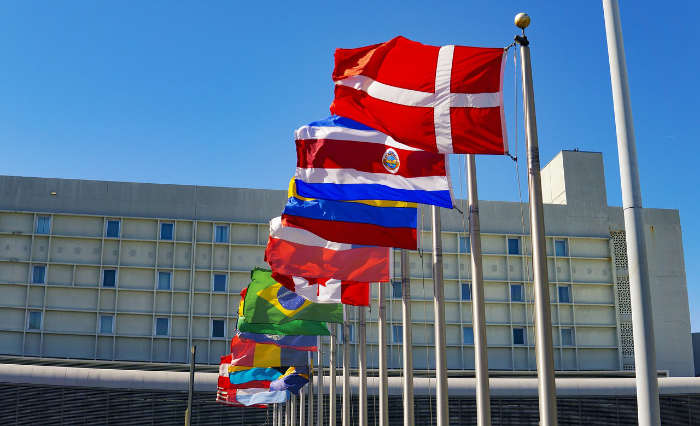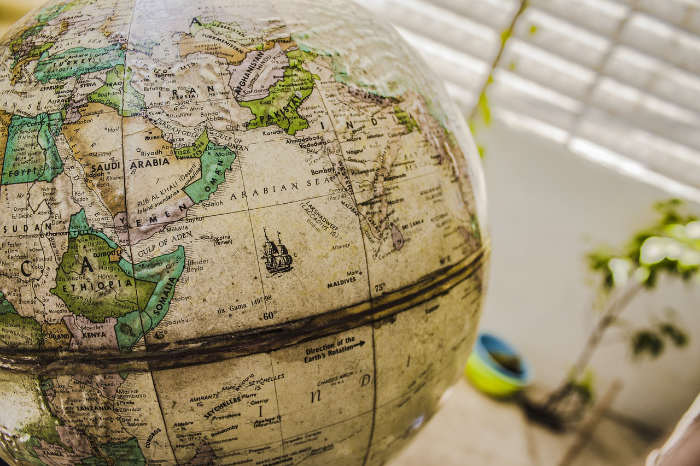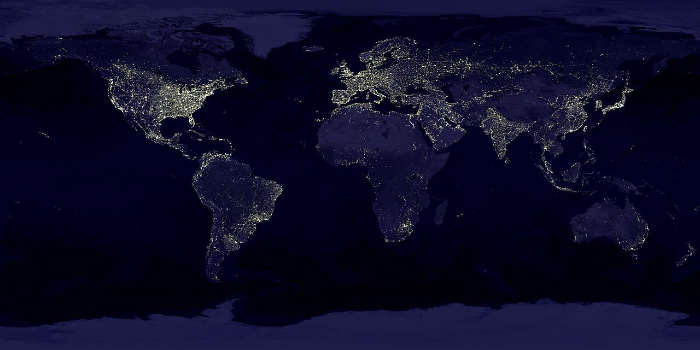Poorest Countries in Europe 2025
$5K
$7.5K
$15K
$25K
$50K
$75K
$100K
$150K
5 Countries with the Lowest Per Capita GDP in Europe
Country | Per Capita (IMF '24)↑ | Per Capita (UN '21) | PPP (int) | Atlas Method | |
|---|---|---|---|---|---|
| Ukraine | $4,847 | $4,118 | $13,360 | $4,270 | |
| Moldova | $6,127 | $4,843 | $15,310 | $5,340 | |
| Belarus | $7,674 | $8,099 | $21,800 | $7,240 | |
| North Macedonia | $8,751 | $7,560 | $19,290 | $6,640 | |
| Albania | $9,176 | $6,825 | $18,210 | $6,770 | |
| Bosnia and Herzegovina | $9,260 | $7,794 | $20,220 | $7,660 | |
| Serbia | $12,240 | $9,503 | $22,720 | $9,140 | |
| Montenegro | $12,661 | $9,846 | $27,530 | $10,400 | |
| Russia | $14,284 | $15,559 | $35,770 | $12,830 | |
| Bulgaria | $16,074 | $13,435 | $32,520 | $13,250 | |
| Romania | $19,566 | $15,902 | $40,600 | $15,660 | |
| Poland | $22,145 | $18,042 | $41,310 | $18,350 | |
| Croatia | $22,888 | $18,594 | $40,740 | $19,470 | |
| Hungary | $23,194 | $18,411 | $40,620 | $19,010 | |
| Latvia | $24,529 | $22,053 | $39,260 | $21,500 | |
| Cyprus | $24,965 | $21,310 | $45,960 | $30,540 | |
| Greece | $25,182 | $21,862 | $36,600 | $21,740 | |
| Slovakia | $25,719 | $21,061 | $36,840 | $22,060 | |
| Lithuania | $28,681 | $25,044 | $46,790 | $23,690 | |
| Portugal | $28,713 | $24,477 | $40,870 | $25,800 | |
| Czech Republic | $30,717 | $27,385 | $47,780 | $26,590 | |
| Estonia | $32,350 | $28,305 | $46,080 | $27,640 | |
| Slovenia | $34,057 | $28,333 | $49,200 | $30,600 | |
| Spain | $34,394 | $29,565 | $45,950 | $31,680 | |
| Italy | $39,361 | $34,608 | $52,470 | $37,700 | |
| Malta | $41,688 | $33,188 | $51,590 | $33,550 | |
| France | $46,961 | $41,640 | $57,090 | $45,860 | |
| Andorra | $47,006 | $40,722 | $46,530 | ||
| United Kingdom | $50,254 | $44,414 | $54,920 | $48,890 | |
| Germany | $54,607 | $48,491 | $65,300 | $53,390 | |
| Finland | $54,782 | $50,239 | $58,950 | $54,360 | |
| Belgium | $55,720 | $49,550 | $60,020 | $48,700 | |
| Sweden | $58,466 | $55,476 | $67,040 | $62,990 | |
| Austria | $59,350 | $51,605 | $68,170 | $56,140 | |
| San Marino | $60,586 | $53,042 | $61,060 | $47,120 | |
| Netherlands | $62,273 | $54,943 | $66,750 | $57,430 | |
| Denmark | $68,303 | $66,667 | $76,810 | $73,200 | |
| Iceland | $83,708 | $70,467 | $65,560 | $68,220 | |
| Norway | $93,712 | $103,044 | $118,440 | $95,510 | |
| Switzerland | $104,652 | $91,267 | $78,040 | $89,450 | |
| Ireland | $106,258 | $100,304 | $91,950 | $81,070 | |
| Luxembourg | $130,143 | $119,819 | $97,750 | $91,200 | |
| Liechtenstein | $193,330 | ||||
| Monaco | $228,791 |
- GNI per capita is gross national income (GNI) divided by mid-year population. GNI is the gross domestic product (GDP) plus net primary income from abroad. GDP is the sum of the value of all goods and services rendered by a country’s residents.
- PPP GNI is gross national income converted to international dollars using purchasing power parity rates. An international dollar is a theoretical monetary unit that has the same purchasing power over GNI as a U.S. dollar in the United States.
Snapshot
- In 2020, Ukraine was Europe's poorest country, followed by Georgia and Kosovo.
- The European Union's economy is among the top three globally, with such individual countries as Germany leading.
- Aided by the Marshall Plan, Western nations laid the EU's groundwork for post-WWII recovery, while Soviet-aligned countries lagged, seeking growth through EU membership post-USSR.
Europe is the world’s second-smallest continent, with an area of 10,180,000km² (3,930,000 square miles). Europe is located entirely in the Northern Hemisphere and mostly in the Eastern Hemisphere.
The United Nations recognizes 50 countries in Europe. However, many lists of European countries take the liberty of including territories that could be countries, but which the U.N. does not recognize as such. For example, Kosovo is a territory that many consider independent, but others consider to be part of Serbia. Other country-sized non-countries include the massive island territory of Greenland, which is an autonomous dependent territory of Denmark, and the FaroeIslands, a self-governing overseas administrative division of the kingdom of Denmark.
The European Union’s collective economy ranks as one of the top three in the world alongside the United States and China (the exact order switches depending upon the specific statistic being compared). Several European countries are individually very wealthy and are among some of the wealthiest globally. For example, Germany has the fourth-largest economy in the world. However, economic prosperity in Europe varies significantly between countries. Eastern European countries, particularly those that were significantly affected by the Soviet Union’s downfall, tend to be the poorest today.
How to Measure the Wealth of a Nation
Gross Domestic Product (GDP) is one of the most important metrics used to measure the economic wealth of an entire nation. It is often complemented by Gross National Income (GNI) per capita, which gives a better indication of how that nation’s individual citizens are faring.
10 Poorest Countries in Europe (PPP GNI)
Country | PPP (int) |
|---|---|
| Ukraine | $13,360 |
| Moldova | $15,310 |
| North Macedonia | $19,290 |
| Albania | $18,210 |
| Belarus | $21,800 |
| Bosnia and Herzegovina | $20,220 |
| Serbia | $22,720 |
| Montenegro | $27,530 |
| Russia | $35,770 |
| Bulgaria | $32,520 |
Top 10 Poorest Countries in Europe (by 2020 GNI per capita, Atlas method, current US$)*
Country | Atlas Method |
|---|---|
| Ukraine | $4,270 |
| Moldova | $5,340 |
| North Macedonia | $6,640 |
| Albania | $6,770 |
| Belarus | $7,240 |
| Bosnia and Herzegovina | $7,660 |
| Serbia | $9,140 |
| Montenegro | $10,400 |
| Russia | $12,830 |
| Bulgaria | $13,250 |
*If counted as European countries rather than Asian countries, the transcontinental countries Armenia ($4,220) and Azerbaijan ($4,450) would also appear on the above list.
1. Ukraine
With a per capita GNI of $3,540, Ukraine is the poorest country in Europe as of 2020. Ukraine once had the second-largest economy in the USSR. However, when the USSR collapsed, Ukraine had difficulty transitioning into a market economy, which sent much of the population into poverty. Some of Ukraine’s continuing issues contributing to its poverty are government corruption, Russian aggression (specifically Russia’s illegal seizure of Crimea in 2014 and the ongoing invasion started in 2022), and weak infrastructure.
2. Georgia
Georgia posted a GNI per capita of $4,290 in 2020, lower than any European country except Ukraine. Geographically bordered by Russia, Turkey, Armenia, and the Black Sea, this former member of the USSR is enduring some difficult times. However, its future looks bright. Thanks to improvements including substantial banking reforms, a reduction in corruption, and heavy governmental investment in education, Georgia’s economy and its score on the Human Development Index (HDI) are both on the rise.
3. Kosovo
Assuming, for the purpose of this discussion, that it is a sovereign country and not an independent Serbian territory, Kosovo had a per capita GNI of $4,440 in 2020, making it the third-poorest country in Europe. Kosovo is a partially recognized state that declared itself independent from Serbia in 2008. About 30% of Kosovo’s population earns an income that falls below the poverty line, meaning that about 550,000 people live in poverty. Additionally, Kosovo had an extremely high unemployment rate of 34.8% as of 2016, with a majority of families earning less than 500 Euros per month.
4. Moldova
Moldova is one of the poorest countries in Europe, with a GNI per capita of $4,570 in 2020. Formerly part of the USSR, Moldova faced political instability, economic decline, trade obstacles, and other hardships following the Soviet Union’s collapse in 1991. Factors contributing to poverty in the country include lack of large-scale industrialization, food insecurity, economic collapse during the transition into a market economy, and errors in social policy, among others. Despite its recent struggles, Moldova is making progress: between 2006 and 2015, the proportion of its population living beneath the national poverty line dropped from 30.2% to 9.6%.
5. Albania
Albania has a GNI per capita of $5,210. After the USSR’s disintegration in the 1990s, Albania shifted from a socialist economy to a capitalist market economy. Although it is the fifth-poorest country in Europe, its economy is continually improving. This is largely thanks to Albania’s rich natural resources, such as oil, natural gas, and minerals including iron, coal, and limestone.
6. North Macedonia
North Macedonia is the sixth-poorest country in Europe. After gaining its independence in 1991, North Macedonia underwent dramatic economic change and has gradually improved its economy. Trade accounts for about 90% of the country’s GDP. Despite the policies successfully implemented by the government, North Macedonia still has a high unemployment rate of about 16.6%. At its highest, the unemployment rate was 38.7%. North Macedonia’s per capita GNI was $5,720 in 2020.
7. Bosnia and Herzegovina
In 2020, Bosnia and Herzegovina registered a GNI per capita of $6,090. The country is still struggling to rebuild from its own war for independence from Yugoslavia, which began in early 1992 and lasted until December 1995. The war and its accompanying ethnic cleansing wreaked havoc on the country’s people, infrastructure, and economy. When the fighting ceased, the casualties were so great that one in four households had come to be headed by women. This put many families at a disadvantage, as women make up a smaller percentage of the workforce in Bosnia and Herzegovina and are often paid less than men. As a result, many families fell into poverty.
8. Belarus
Like other former Soviet republics, Belarus faced economic trouble following the disintegration of the USSR. In the years before, Belarus had a strong economy and one of the highest living standards among Soviet republics. During the following years, Belarus faced economic hardship until 1996, when the economy began to recover. Between 2006 and 2011, when many countries in Europe felt the effects of the recession, expenditures among the bottom 40% of Belarusians increased. The country’s 2020 per capita GNI was $6,330.
9. Serbia
Serbia’s GNI per capita for 2020 was $7,400. At the beginning of the 2000s, Serbia experienced eight years of economic growth until the global recession in 2008. Serbia’s economy went into a recession in 2009, registering a decline of 3% that year and 1.5% in 2012. As a result, the country’s public debt doubled to 63.8% of its GDP. About 25% of Serbians are impoverished. However, such industries as food and energy production are strong, and Serbia’s economic situation continues to improve.
10. Montenegro
Montenegro’s GNI per capita is $7,900. Its economy is small and relies heavily upon energy industries. Urban expansion and deforestation have eroded Montenegro’s natural resources, making it vulnerable to resource depletion. Additionally, gender and age discrimination cause large gaps in income, particularly for women. About 50,000 of the population are internally displaced persons and refugees. They are among the country’s poorest, with a poverty rate roughly six times the national average of 8.6%.
How Europe’s Economies Recovered from World War I & II
World War I and World War II damaged most European economies. During the Cold War after WWII, two different coalitions were formed to reconstruct Europe and bolster its economic health. Several central and eastern European states came together under the Soviet Union’s control, forming COMECON (Council for Mutual Economic Assistance). Meanwhile, countries in western Europe accepted United States’ aid in the form of the European Recovery Program (ERP), also called the Marshall Plan, and linked their economies together through various trade and economic alliances.
These alliances included the 1948 Organisation for European Economic Co-operation (OEEC), which would evolve into today’s Organisation for Economic Co-operation and Development (OECD), and the European Coal and Steel Community (ECSC), one of the ancestors of today’s European Union (EU). These alliances helped western European countries to rapidly improve their economies, while many COMECON countries still struggled.
After the collapse of the Soviet Union, many former COMECON countries gradually joined the European Union (though several of them are still struggling with high levels of poverty):
- East Germany in 1990
- Estonia, Latvia, Lithuania, Czech Republic, Hungary, Poland, Slovakia, and Slovenia in 2004
- Bulgaria and Romania in 2007
- Croatia in 2013
























